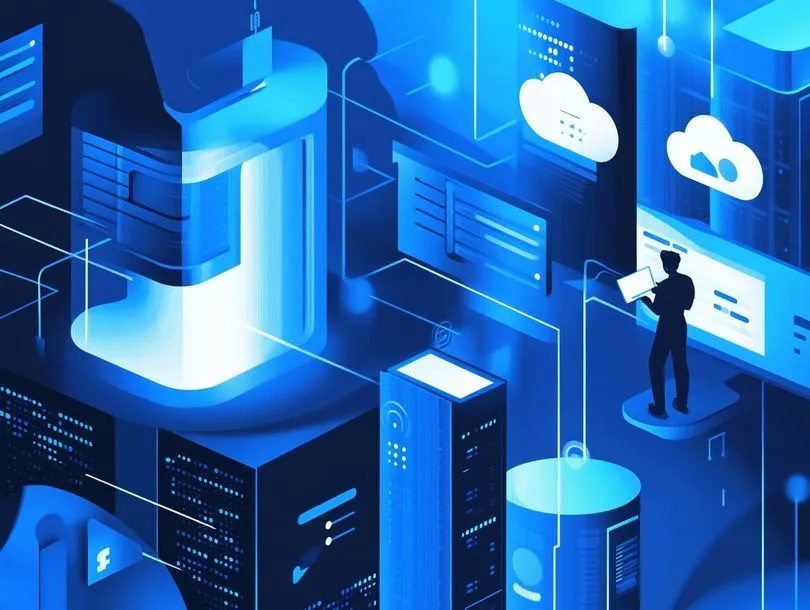Wanting to integrate AI without first mapping your information system would be unconscionable (at best), if not doomed to failure (at worst). IT doesn’t do things by halves.
Why is IS mapping so important when integrating AI? Team Carto-SI has the answer to (almost) everything on the subject. What’s its mindset on this question? The answer: “Deploying and using AI requires mastering your data by mapping it”.
Mapping your IS is a crucial step for companies wishing to deploy AI. This step has 3 major advantages, as it enables you to:
1. Gain better control over their data, thanks to better visibility and understanding of data flows and interactions between systems, i.e. “dependencies”, as the Carto-SI team likes to say.
2. Optimize resources (whether human, technical or financial), to avoid duplication and waste of time and money. Your Codir will appreciate the effort.
3. Make better, faster decisions. And having more information on which to base decisions also means less risk of making a mistake.
1. Better control over your data
Get faster, more secure access to data
Artificial intelligence needs data to reveal its full potential. Access to data and an understanding of data flows are therefore essential prerequisites for the successful integration of AI. And this is where IS mapping comes in.
Mapping your information system is not difficult in itself, but the trickiest part is collecting the data: how do you gather reliable information, dynamically, quickly and regularly, and model it? An IS mapping tool must meet this need. It has to be efficient and quick to learn for the various IT professions, whether they are project managers, project owners, business process managers or system operators.
IS mapping is intended to become a reference tool, updated in real time, listing all data flows in a coherent and secure manner. In fact, the lack of data quality and governance has been identified as a major obstacle to the adoption of AI by companies. In other words, it’s vital to address this issue right from the start of the project.
A better understanding of IS dependencies
Where everyone talks about “flows”, Carto SI prefers to talk about “dependencies” to mean that one component needs another to function. And given that a dependency between two applications can contain information on the data exchanged, the notion of dependency takes on its full importance in the context of AI deployment.
Mapping your information system means ensuring that your IS is as efficient as possible, and truly supports your business. And putting IT to work for your business means mastering your data. We’ve come full circle!
2. Optimize resources
Eliminate duplication and inconsistencies
Mapping your IS enables you to identify all your resources, and to eliminate duplication or inconsistencies in their use:
- Servers used twice for different purposes,
- Unused servers,
- Different applications used for the same purpose,
- Employees allocated to the same task,
- resource overruns,
- etc.
This is where we come to the major difference between modeling tools and operational mapping tools. The former are incapable of representing inconsistencies in the information system, whereas the latter excel at doing so (which is in fact what they are asked to do). Representing these inconsistencies is crucial to sharing them and validating them with a view to correcting them. Modeling tools are not suited to this kind of need.
By visualizing the state of your infrastructure, you can identify any shortcomings (in terms of storage, servers, etc.), correct them and optimize them with a view to implementing AI. The aim: to bring each resource back to its primary use, to have a “clean and tidy” IS, to have visibility over “everything that comes in” and “everything that goes out” before integrating AI
Better justification of expenses
Any board of directors will appreciate the arrival of a CIO who knows exactly how many resources are available, how they are being used and what optimization work has been carried out upstream on these resources. Information system mapping is not just a technical tool, it’s also a key element in justifying expenditure to decision-makers.
The integration of AI promises to boost productivity and competitiveness. So it’s a business issue by excellence. The Codir will be much more receptive to investment requests once it has been established that IS resources are correctly allocated and that quality data is available.
3. Decide better, decide faster… to avoid screwing up
IS mapping helps to better guide decisions concerning AI projects. It provides an overview that helps answer crucial questions such as:
- What data is available for AI (in sufficient quality and volume)?
- What bridges, if any, need to be built to make data available to AI?
- What data needs to be anonymized before being pushed into AI?
- Are technical resources sufficient to handle AI-related workloads? If not, what architecture choices and investments should be prioritized?
- What processes can be improved with AI?
- Are there any additional data security measures to be put in place as part of AI integration?
All this work helps to focus and prioritize the various stages of AI deployment, concentrating efforts on the most strategic initiatives.
Far be it from us to dampen the spirits, but what are the risks for organizations wishing to deploy AI without having mapped their IS?
- 1st risk: leading the project to failure after having made significant and costly investments (due to: lack of visibility over data, inability to separate private and public data, difficulty in identifying dependencies within the IS, overloading of technical resources, etc.).
- 2nd risk: loss of control over data supplied to AI, leading to data leaks.
IS mapping and AI: what to remember?
Mapping your information system to maximize the benefits of AI
Mapping your information system with a view to integrating AI enables you to gain better control over your data and understand the dependencies within your IS. The result is better optimization of resources and improved decision-making (faster, more efficient). Well-structured mapping is essential to maximize the benefits of AI and reduce the risks of failure or technical incompatibilities.
Big Data, RGPD, AI: the same battle over data
The integration of AI is a subject that profoundly relates to the issue of data, just as it did with the arrival of Big Data and the RGPD. What do all these major projects have in common? IS mapping has each time positioned itself as an indispensable tool for bringing them to a successful conclusion.
Mapping your IS to stay one step ahead
And as the Carto-SI team points out: you may not currently be concerned with AI integration issues, but it’s probably only a matter of time. Organizations that take the time to map their information systems and structure their data will already have done much of the work, and gained a huge competitive advantage.
Guest article written by Aline Cordier Simonneau













